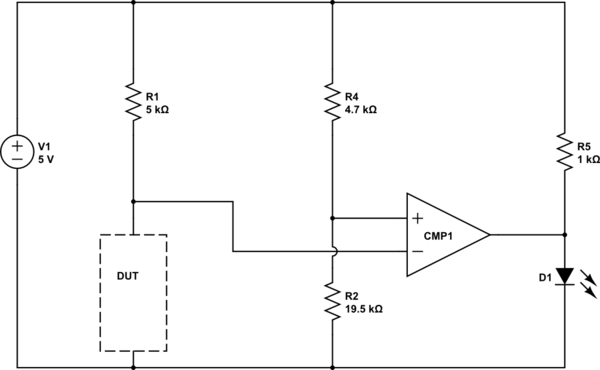I'm looking to create a circuit which will be used to test external PCBs. One of the external circuits features four switches with three resistors in what I believe is known as a resistance ladder (or network). The schematic for this is below:
Could someone very kindly draw me a basic circuit which features four LEDs which illuminate depending on which switch is being operated on the external circuit? Hopefully this isn't too complicated?
I.e if SW1 is being pressed on this external circuit then LED1 illuminates on our circuit and so on.
I'd really appreciate any help or advice with this! Thank you in advance!


